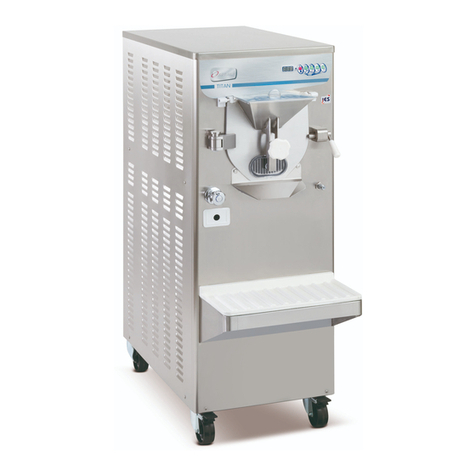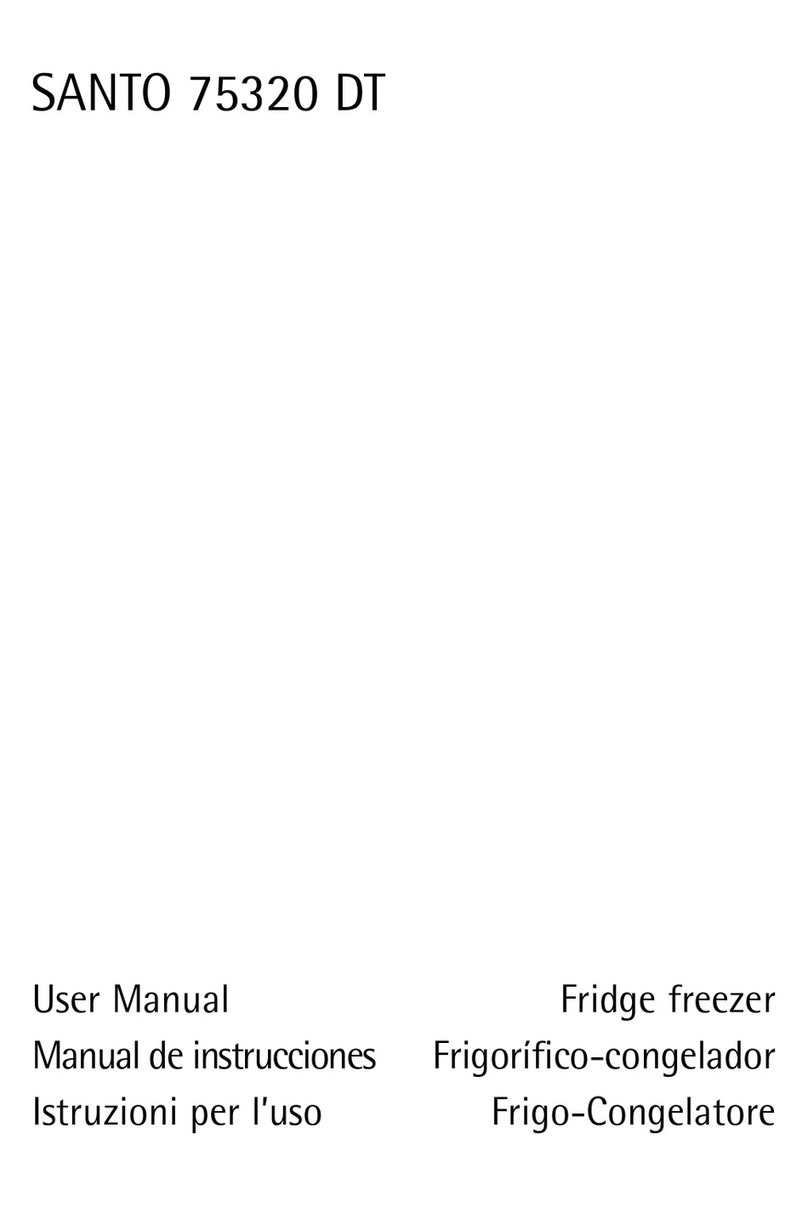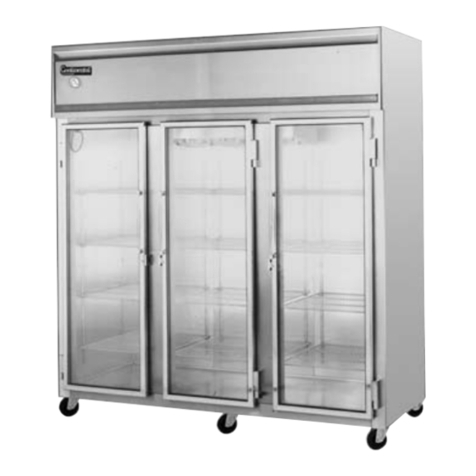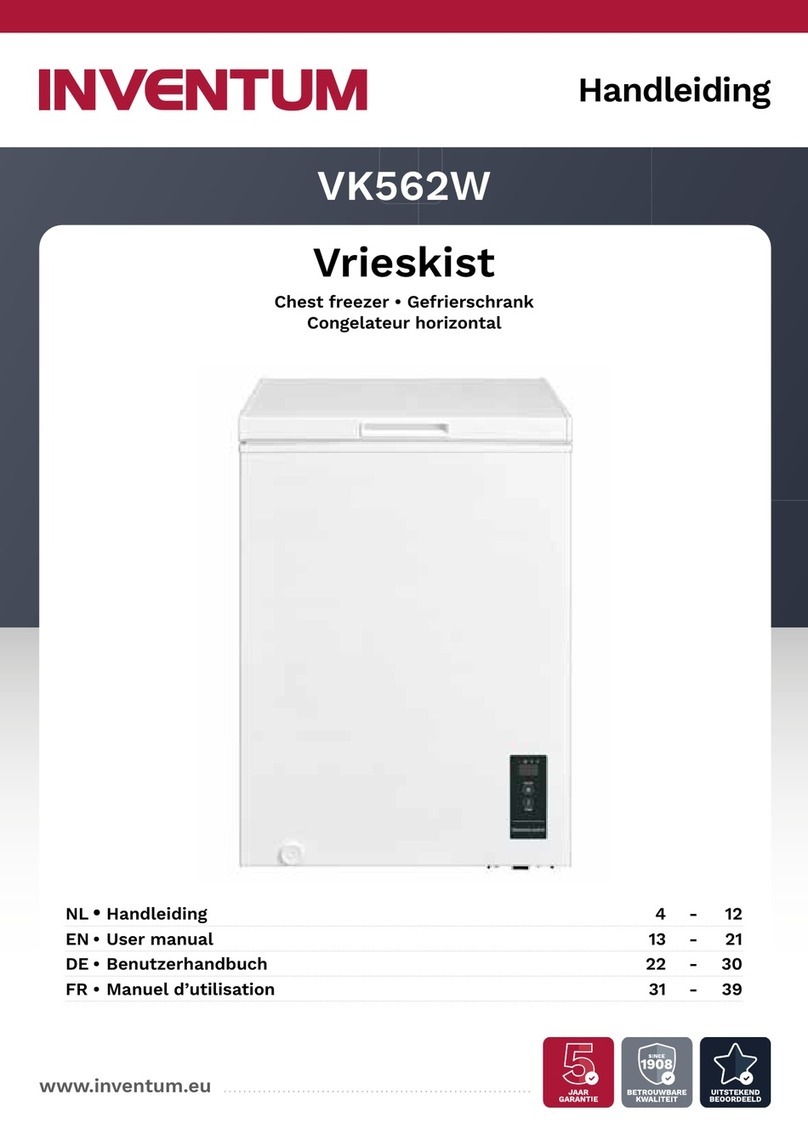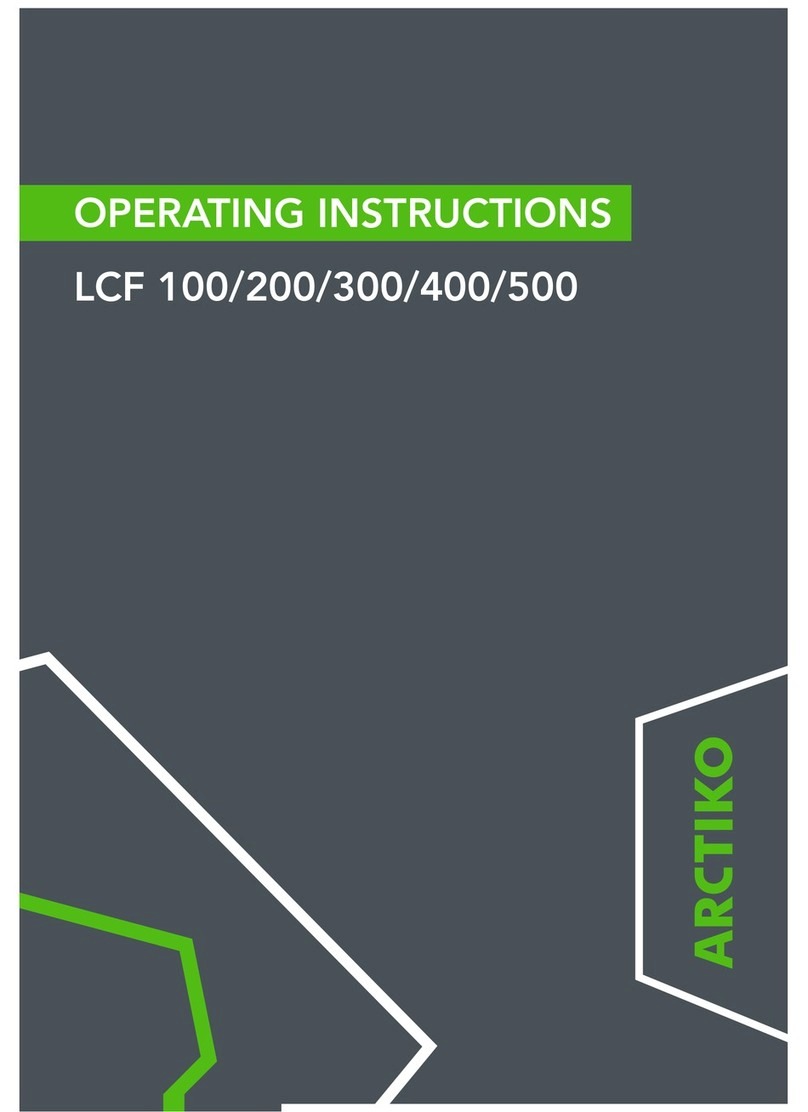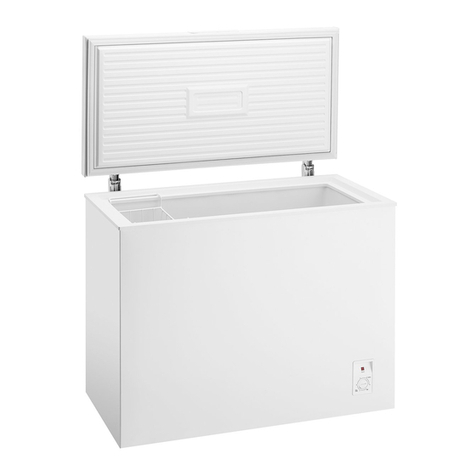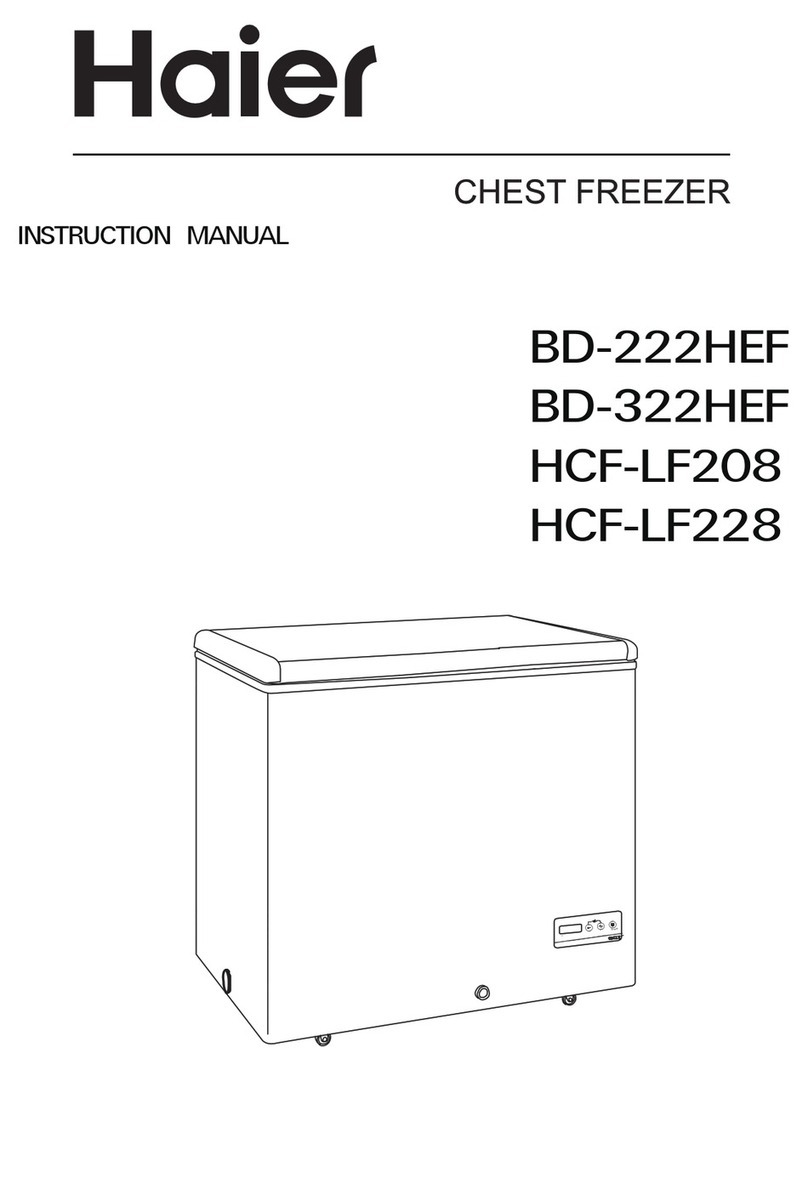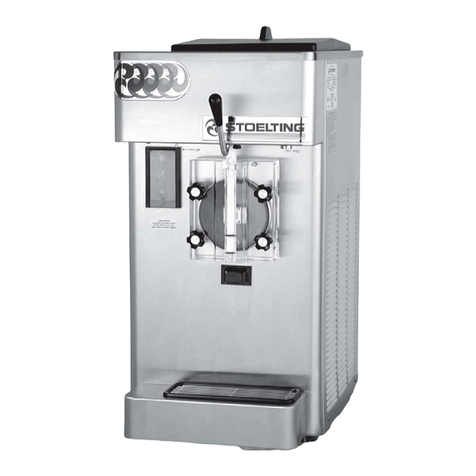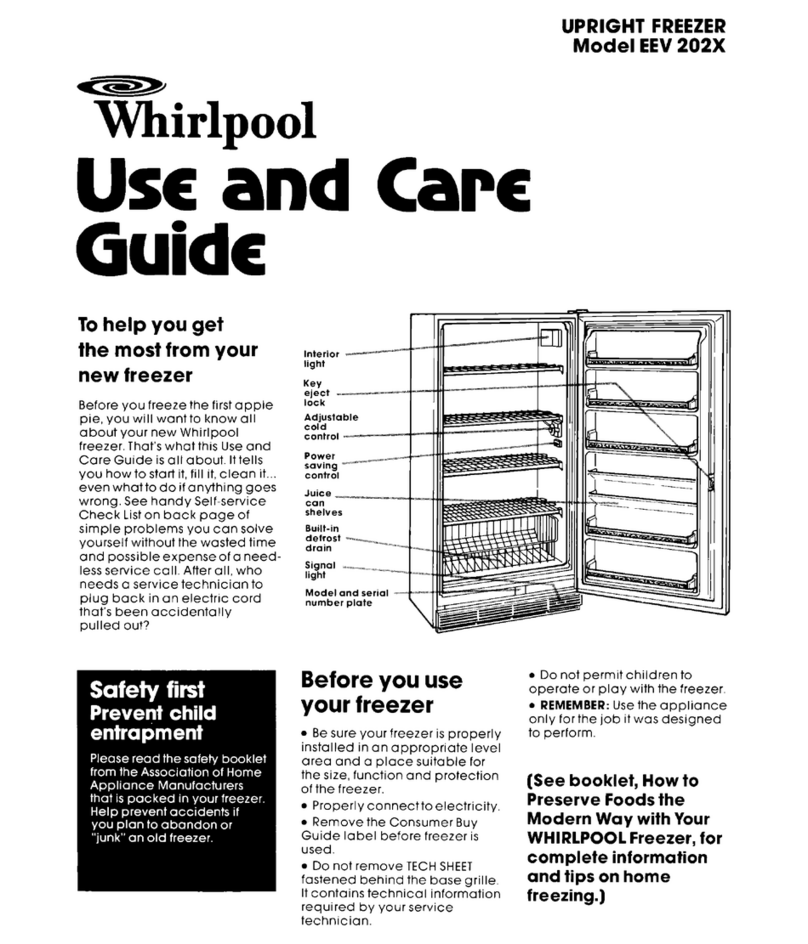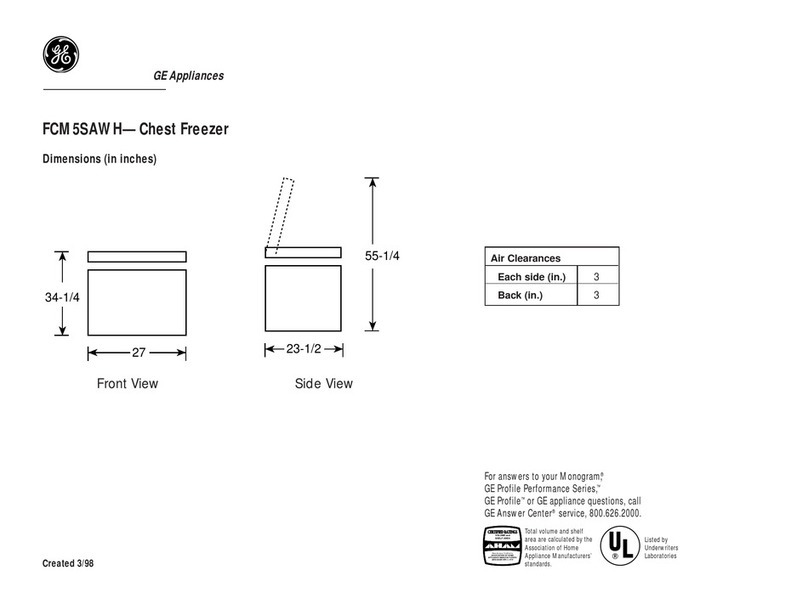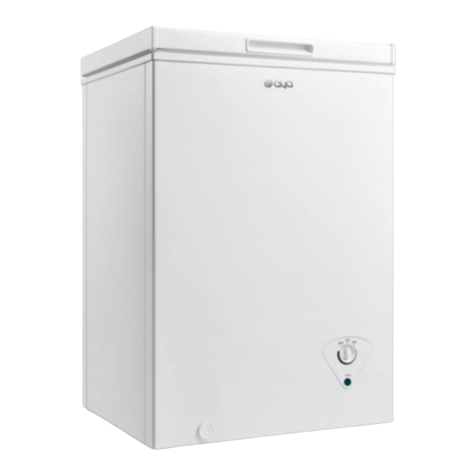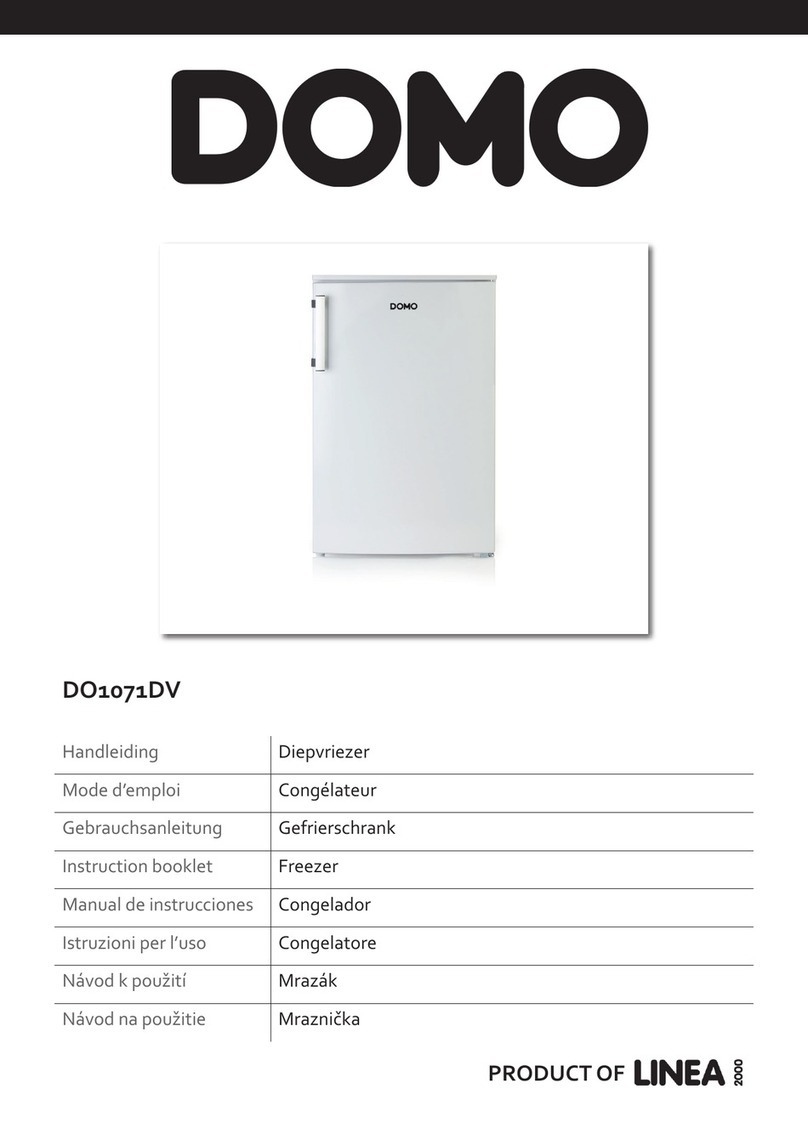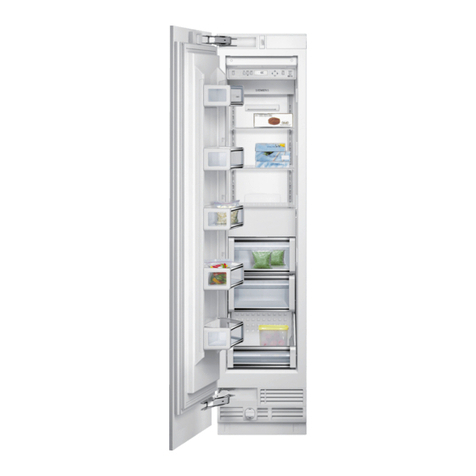Thermo Forma 3795 Operating instructions

Millcreek Road, P.O. Box 649
Marietta, Ohio 45750
U.S.A. Telephone: (740) 373-4763
Telefax: (740) 373-4189
Models:
3795 / 3796 3797 / 3798
3799 / 3800 3801 / 3802
Laboratory Freezers
Operating and Maintenance Manual
Manual No. 7003795 Rev. 3
Read this Instruction Manual
Failure to read, understand and follow the instructions in this manual may result in damage to the unit,
injury to operating personnel, and poor equipment performance.
Caution: Any internal adjustments and maintenance must be performed
by qualified service personnel.
51-1483-06 Rev. B
ThermoForma

DoYou Need Information or Assistance on
Thermo Forma Products?
If you do, please contact us 8:00 A.M. to 7:00 P.M. (Eastern Standard Time) at:
1-740-373-4763 Direct
1-888-213-1790 Toll Free, U.S. and Canada
1-740-373-4189 FAX
http://www.forma.com Internet Worldwide Web Home Page
Our Sales Support staff can provide information on pricing and give you quotations. We
can take your order and provide delivery information on major equipment items or make
arrangements to have your local sales representative contact you. Our products are listed on the
Internet and we can be contacted through our Internet home page.
Our Service Support staff can supply technical information about proper setup, operation or
troubleshooting of your equipment. We can fill your needs for spare or replacement parts or pro-
vide you with on-site service. We can also provide you with a quotation on our Extended
Warranty for your Thermo Forma products.
Whatever Thermo Forma products you need or use, we will be happy to discuss your appli-
cations. If you are experiencing technical problems, working together, we will help you locate
the problem and, chances are, correct it yourself... over the telephone without a service call.
When more extensive service is necessary, we will assist you with direct factory trained
technicians or a qualified service organization for on-the-spot repair. If your service need is cov-
ered by the warranty, we will arrange for the unit to be repaired at our expense and to your satis-
faction.
Regardless of your needs, our professional telephone technicians are available to assist you
Monday through Friday from 8:00 a.m. to 7:00 p.m. Eastern Time. Please contact us by tele-
phone or fax. If you wish to write, our mailing address is:
Thermo Forma
Millcreek Road, P.O. Box 649
Marietta, OH 45750
International customers please contact your local Thermo Forma distributor.

SECTION I
General Information

Thermo Forma MODELS
PART # FORMA MODEL # MODEL TYPE CUBIC FEET DOOR TYPE VOLTAGE
52-1996-25 3795 Freezer 27.3 1 Solid Hinged 115
52-1996-26 3796 Freezer 27.3 1 Solid Hinged 220
52-1996-27 3797 Freezer 49.1 2 Solid Hinged 115
52-1996-28 3798 Freezer 49.1 2 Solid Hinged 220
52-1996-29 3799 Freezer 76.2 3 Solid Hinged 115
52-1996-30 3800 Freezer 76.2 3 Solid Hinged 220
52-1984-31 3801 Cold Wall Freezer 27.3 1 Solid Hinged 115
52-1984-32 3802 Cold Wall Freezer 27.3 1 Solid Hinged 220
Except for routine cleaning,these low temperature
cabinets will require little maintenance. In the
unusual event that repair should be necessary, this
manual presents information that is helpful in
maintaining, diagnosing, and repairing these cab-
inets.

GENERAL INFORMATION 3
TABLE OF CONTENTS
SECTION I - GENERAL INFORMATION
Handling & Installation ............................................ 5
Condensate Pan Installation .................................... 6
Cabinet Startup ........................................................ 6
Cabinet Operation .................................................... 7
Export Models .......................................................... 7
Ways to Minimize Frost Build-up ............................ 7
Dimensional Drawings ............................................ 8
Top Mount, Solid, Pull Door Freezers
Specifications .......................................................... 9
Top Mount, Solid, Pull Door Freezers
Grounding Instructions .......................................... 10
Serial Rating Plates .............................................. 10
Dim. Drawings / Elec. & Ref. Specs. ...................... 11
Top Mount, Solid, Pull Door Freezers
Flammable Material Storage
COMPONENT IDENTIFICATION
Condensing Unit Assembly Component Ident. ...... 12
Model: 3795 & Export Model: 3796
Condensing Unit Assembly Component Ident. ...... 13
Models: 3797 / 3799 &
Export Models: 3798 / 3800
Compressor Area Layout Component Ident........... 14
Model: 3801 & Export Model: 3802
Flammable Material Storage
Evaporator Coil Assembly Component Ident. ........ 15
Models: 3795 / 3797 / 3799 &
Export Models: 3796 / 3798 / 3800
Evaporator Fan Shroud Assem. Component Ident. 16
Models: 3795 / 3797 / 3799 &
Export Models: 3796 / 3798 / 3800
Electrical Box Assembly Component Ident............. 17
Model: 3795 / 3797/3799
Export Model: 3796 / 3798 / 3800
Electrical Box Assembly Component Ident............. 18
Model: 3801 & Export Model: 3802
Incandescent Light Assembly ................................ 19
Models: 3795 / 3797 / 3799 &
Export Models: 3796 / 3798 / 3800
SECTION II - ELECTRICAL &
REFRIGERATION INFORMATION
Low Temperaturer Freezer
Component Specifications .................................... 22
ELECTRICAL & REFRIGERATION SPECIFICATIONS
Solid, 1-Door Freezers -
Model: 3801 & Export Model: 3802
Flammable Material Storage .............................. 23
Solid, 1-Door Freezers
Model: 3795 & Export Model: 3796 .................. 23
Solid, 2-Door Freezers
Model: 3797 & Export Model: 3798 .................. 24
Solid, 3-Door Freezers
Model: 3799 & Export Model: 3800 .................. 24
CONTROL ANNUCIATOR PANEL INFORMATION
Control Panel Layout ............................................ 25
General Information / Alarm System .................... 26
Chart Recorder Features ...................................... 27
Temp. Recorder Calibration .................................. 27
Battery Backup ...................................................... 28
Alarm/Control Relay .............................................. 28
Setting Alarm Set Point .......................................... 28
Cobex Model #C-921 ............................................ 29
WIRING DIAGRAMS
Models: 3795 / 3796 3799 / 3800........................ 30
3797 / 3798
Models: Control Panel ............................................ 31
3795 / 3796 3799 / 3800 / 3797 / 3798
Model: 3801 & Export Model: 3802 ........................ 32
00-0430-00
Transformer Layout ................................................ 33
Temperature Probe Bottle Instrucitons .................. 33

4 GENERAL INFORMATION
TABLE OF CONTENTS -
continued
SECTION III - MAINTENANCE & REPAIR
General Maintenance & Repair .................................. 37
Service Information ...................................................... 37
Compressor Installation .............................................. 39
COMPONENT REPLACEMENT
Evaporator Drain Pan ............................................ 41
Thermostat ............................................................ 42
Condenser & Electrical Box Access ...................... 43
Evaporator Fan Motor ............................................ 44
Solid Door Removal, Installation & Adjustment .... 45
Fan Delay & Defrost Term. Control ........................ 46
Defrost Heater ...................................................... 47
2 & 3-Door Condensate Heater ............................ 48
Door Gasket .......................................................... 49
Metering Device .................................................... 50
Condenser Fan Motor ............................................ 51
Master Power Supply Switch ................................ 52
Center Mullion ........................................................ 53
Perimeter Heater .................................................... 54
Cabinet Raceway / Door Switch ............................ 55
Touch-up Paint ...................................................... 56
Cleaning ................................................................ 57
TROUBLESHOOTING GUIDES
Machinery .............................................................. 58
Compressor .......................................................... 60
SECTION IV - PARTS LISTS
Replacement Parts List .......................................... 65
Accessories ............................................................ 67
Lab & Pharmacy Refrigerators/Freezers &
Chromatography Refrigerators Warranty .............. 69
Lab & Pharmacy Refrigerators/Freezers &
Chromatography Refrigerators
International Dealer Warranty ................................ 70
DUE TO CONTINUING PRODUCT IMPROVEMENTS, ALL DATA AND INFORMATION IN THIS MANUAL IS SUBJECT
TO CHANGE WITHOUT NOTICE.

HANDLING & INSTALLATION
GENERAL INFORMATION 5
FREIGHT DAMAGES & SHORTAGES
IMPORTANT
The cabinet was inspected and packaged at the
factory, and should arrive in excellent condition.
The transportation company or other parties
involved in the shipment are responsible for loss
and/or damage. Always make an inspection
before and after uncrating. Inspect the crated
units before locating (preferably at the point of
unloading by the transportation company).
INSPECTING FOR DAMAGES
Note: Always use care when removing shipping
tape, blocks, pads, hardware or other material
until you are satisfied that the unit is completely
operational. Contact Thermo Forma if technical
assistance is required.
Check the cartons or containers.If these are damaged
in any way, open them and inspect the contents in the
driver’s presence. If damage is detected:
1. Have the driver note the nature and extent of the dam-
age on the freight bill.
2. Notify the transportation company at once to request
an inspection. Carrier claim policies usually require
inspections to be made within 15 days of delivery.
3. If damage is noticed, file a claim with the transporta-
tion company.
FILING A CLAIM
File a claim for loss at once with the transportation com-
pany for: A cash adjustment; Repairs; or Replacement.
When filing your claim, retain all packaging materials
and receipts.
HANDLING THE CABINET
Note:
The refrigeration system of the cabinet is
designed to operate with the cabinet located on a level
surface. Do not tilt the cabinet more than 10° to any
side. If the cabinet must be tilted on an angle for han-
dling or moving purposes, allow it to sit in an upright
position 30 minutes prior to starting.
CHOOSING A LOCATION
This model cabinet should be situated to allow proper air
circulation. These cabinets require a 2" minimum clear-
ance behind and 12" between the top of the cabinet and
the ceiling for proper air circulation.
The cabinet must be installed on sturdy, solid, level floor.
The cabinet must be located so it can be plugged into a
properly grounded three-prong electrical outlet of 115
volt, 60 hz.The electrical outlet should not be controlled
by a wall switch which might be turned off accidentally.
UNCRATING THE CABINET
The cabinet should be moved as close as possible to the
operating location before removing crate base. Be sure
to follow the steps in the “INSPECTING FOR DAM-
AGES”instructions.
INSTALLING THE CABINET
(Models with Top Mounted Compressor)
Whenever possible leave the crate base on the cabinet
until it is moved close to the final position.When it is nec-
essary to move the cabinet through a doorway, it may be
necessary to remove the crate base.
Wood runners are provided on the underside of the cab-
inet for ease in sliding. These runners should be left
attached to the cabinet when the crate base is removed
and should remain attached until after the legs are
installed.The cabinet can then be pushed around more
easily without scratching the floor.The runners also pre-
vent damage to the electrical receptacle and conden-
sate pan hardware on the cabinet bottom.
After the cabinet has been moved to the approximate
final location, remove the package containing the legs
from the cabinet interior. Tape the doors to prevent
accidental opening when handling. Raise the sides of
the cabinet high enough to mount the legs at the loca-
tions provided on the bottom of the cabinet.
IMPORTANT:
AFTER REMOVAL
OF WOOD RUN-
NER, REPLACE
BOLT“A”INTO LEG
MOUNTING
BRACKETS.THIS IS
EXTREMELY
IMPORTANTTO
THE SECURE
ATTACHMENT OF
THE CABINET LEG.
THERE MUST BE
FOUR (4) BOLTS
SECURING EACH
LEG.
Level the cabinet by means of the leg adjustments.
Cabinet doors are self-closing, and the cabinet must be
level to operate properly.

6 GENERAL INFORMATION
CONDENSATE PAN
INSTALLATION INSTRUCTIONS
MAKE SURE THE CABINET IS DISCONNECTED
FROM ITS POWER SOURCE
1. Remove and discard protective cover over electrical
receptacle on bottom of cabinet
2. Bend down front part of housing. (See above.)
3. Insert condensate evaporator pan assembly into the
slide supports on the underside of the cabinet by
pushing toward back of cabinet until it stops.
4. Plug supply cord into receptacle in underside of
cabinet.
5. Bend up front part of housing. Line up slot with
rivnut in cabinet bottom and insert thumbscrew
through slot onto rivnut in cabinet bottom. Insert
thumb screw through slot onto rivnut and tighten.
6.The assembly will now operate when power is sup-
plied to the cabinet.
7. Inspect rear of cabinet to ensure that the drain line
from the evaporator is properly positioned over the
condensate pan.
CABINET STARTUP
Once the cabinet has been located in its permanent
location and the proper power and grounding have
been provided, the following items must be checked or
completed:
1. Cut and remove the compressor hold-down band (if
applicable) so the compressor “floats”freely.
2. Check for traces of oil on the compressor pan which
could mean a broken or leaking refrigeration line.
UNDER NO CIRCUMSTANCE SHOULD THE
COMPRESSOR BE STARTEDWHEN OIL IS PRE-
SENT UNTIL INSPECTED BY A SERVICE TECH-
NICIAN.
3. INSPECT THE FACTORY WIRING FOR
TERMINALS THAT MIGHT HAVE VIBRATED
LOOSE IN SHIPPING. TIGHTEN ALL SCREW-
TYPE TERMINALS.
4. Check the refrigeration lines to see that they are
“free”and no damage was done during shipping.
5. Check fan blade(s) for “free”operation.
6.Turn on the main power switch. Once the compressor
starts, the voltage should be checked at the compres-
sor terminals to determine if there is proper voltage to
the compressor. The voltage should not exceed 10%
above or below the rated compressor voltage.
EXAMPLE: If the voltage reads 115 volts with no load
and it drops below 103 volts when the compressor
starts, it may indicate that the supply wiring is too
small or that the wire run is too long.
7. Make sure that the drain line has not been dis-
lodged or broken during shipping and that the drain
trap terminates properly in the condensate pan or
floor drain. (See Condensate Pan on top mounted
compressor.)
8. Listen for any unusual noise such as lines vibrating,
etc. Correct problem by tightening screws, slightly
bending tubing, etc.
9. Check proper tension on doors. (See Door Torque
Adjustment.)
THERMOSTAT SETTINGS
The freezer is shipped from the factory with a thermo-
stat setting of approximately the mid-point of the oper-
ating range. Final thermostat setting must be made in
the field.
Allow the cabinet to operate until the compressor
cycles on the thermostat. The normal operating tem-
perature range is: 0°F to -22°F (-18°C to -30°C).
The thermostat is easily adusted with a standard
screwdriver. In models where the thermostat has
control settings 1 through 7, turn the thermostat to a
higher number to lower the cabinet temperature.Other
models use thermostats with actual temperature
settings indicated.
NOTE: DO NOT OPERATE THE CABINET WITH THERMO-
STAT SETTING BELOW -23°F (-30°C) ON FREEZERS.
DEFROST SETTING
(Forced Air Models Only)
Set the time-of-day on the defrost clock and check to
see that the defrost pins are set to the desire defrost
times. (The defrost clock is located in the wiring box.)
The factory settings are as follows:
Freezers: Two (2) defrosts per day (6 a.m. & 10 p.m.).
Failsafe pin set at 40 minutes.
DRAIN LINE FROM
EVAPORATOR - SEE
NOTE #7.
SUPPLY CORD

GENERAL INFORMATION 7
CABINET OPERATION
There are two thermodiscs located on the evaporator
coil.The purpose of one is to keep the evaporator fan
motors and anti-condensate heaters off after defrost
cycles until the coil reaches 32°F(0°C).This prevents
moisture from being pulled down into the product area
and provides faster pull-down. The purpose of the
other control is to de-energize the defrost heater and
to energize the trip solenoid in the time clock to termin-
ate the defrost cycle when the fin coil reaches 62°F
(17°C).
When the refrigeration system first starts up, the room
temperature and the coil temperature are above 62°F
(17°C).The fan delay thermostat is open and the fans
and anti-condensate heaters remain off. The fan
motors will come on when the evaporator temperature
is pulled down to approximately 32°F(0°C). This fan
delay control cannot be adjusted. If a single fan motor
fails to start when the thermostat is below 32°F(0°C),
it may be an indication of a defective fan motor. If all
fan motors fail to start, it is an indication of a defective
fan delay control.
MANUAL DEFROST (Cold Wall Models)
DEFROSTING & CLEANING
A complete defrost will be required periodically,
depending on the usage of the cabinet.To defrost:
1. Unload cabinet of product.
2. Pull power supply cord from wall receptacle.
3.To hasten process, set pans of warm water on
shelves of storage compartment, or let a fan blow
into the storage area, with the door open.
4.Wipe all shelving and wall surfaces clean and dry.
5. Remove shelves and shelf standards if necessary
for thorough cleaning.
6. Return all components, plug in power cord.
7. Once cabinet has attained desired temperature,
reload cabinet with product.
EXPORT MODELS
Export model cabinets come equipped with an auto
transformer located in the unit compartment. The
selector switch can be set to various customer voltage
requirements - Factory Setting: Mid position for an
incoming voltage between 212V and 238V.
PRIOR TO STARTING THE CABINET
Supply voltage must be checked in order to determine
the correct position of the variable voltage switch
located on the auto transformer. This will ensure the
cabinet is operating at the correct optimum voltage. In
the event the transformer supply line plug does not
match the electrical outlet, the plug can be changed to
one with equal voltage-amperage rating.
Refer to page 34 for transformer layout.
WAYS TO MINIMIZE FROST
& ICE BUILDUP INSIDE FREEZERS
Moisture-laden air migrates into the freezer during door
openings and, under normal operation, will be absorbed
or removed by the refrigeration system and the defrost
cycle. The lower the temperature is in the freezer, the
more rapidly frost and ice will accumulate. Opening
doors frequently will also increase frost and ice buildup.
There are several things that you can do to reduce the
accumulation of ice/frost on the interior parts of the cab-
inet and product. If this icing condition exists, the follow-
ing items should be checked and corrected as required:
1. Minimize door openings.
2. Keep the length of time door is open to a minimum.
3. Check the door gaskets for possible air leaks. Look
for frost patches around the door openings of both
the inner and outer doors. Make sure that gasket
seals all around door opening; any leak will allow
moist outside air to enter the cabinet.
4. Make sure the door latches work properly.
5.These freezers are designed to operate in range of
-18°C to -30°C. Keep freezer thermostat set as high
as possible to minimize frost buildup.
6. Look for moisture draining from the drain tube at the
rear of the cabinet during and after a defrost.This is
normal and tells you that the unit is going through
proper defrost cycle.The drain line must be properly
trapped as shipped from the factory.
7. Evaporator defrost heater and the drain tube heater
must work properly and have proper voltage supply.
8.The defrost heater and drain heater must be in their
proper locations.
9. Ensure that the freezer is sealed where tubing enters
upper left hand corner of the cabinet.
10.The freezer should not be located where excessive
drafts from doors or air conditioning vents can blow
into it.
IMPORTANT NOTE
Door may be hard to open for a short period of time after
closing. Wait a few seconds to allow interior air pressure
to balance.

8 GENERAL INFORMATION
DIMENSIONAL DRAWINGS
LowTemperature,Top Mount, Solid Pull Door Freezers
33"
36 9/16"
29 5/8"
SIDE VIEW
31"
26 1/4"
Interior
83 3/4"
6"
83 3/4"
6"
52"
47 1/4"
Interior
83 3/4"
6"
78"
73 1/4"
Interior

GENERAL INFORMATION 9
SPECIFICATION 1-DOOR 2-DOOR 3-DOOR
Compressor Mount Top Top Top
Temperature Range 0°to -20°(-18°to -30°C) 0°to -20°(-18°to -30°C) 0°to -20°(-18°to -30°C)
Number of Doors 1 2 3
Door Construction Foam-in-Place Foam-in-Place Foam-in-Place
Hinge Type Camlift / Spring Assist. Camlift / Spring Assist. Camlift / Spring Assist
Number of Shelves 4 x 1 bottom rack 8 x 2 bottom rack 12 x 3 bottom rack
Shelf Type
Cantilever, Epoxy Coated Steel Wire Cantilever, Epoxy Coated Steel Wire Cantilever, Epoxy Coated Steel Wire
Shelf Adjustment 3/4" 3/4" 3/4"
Insulation - CFC-Free Foam-in-Place Urethane Foam-in-Place Urethane Foam-in-Place Urethane
Wall Thickness 2 3/8" 2 3/8" 2 3/8"
Shipping Weight (Approx.) 460 lbs. 660 lbs. 870 lbs.
Compressor Size 1/3 Hp. 1/2 Hp. 3/4 Hp.
Condenser Type Fin & Tube Forced Air Fin & Tube Forced Air Fin & Tube Forced Air
Evaporator Type Fin & Tube Forced Air Fin & Tube Forced Air Fin & Tube Forced Air
Refrigerant Type R-404A R-404A R-404A
Refrigerant Control Expansion Valve Expansion Valve Expansion Valve
Amp Rating - Data Plate 3795: 7.7; 3796: 4.4 3797: 13.6; 3798: 8.2 3799: 16.0; 3800: 9.6
3801: 3.7; 3802: 1.8
Electrical Specs.
(V / HZ / PH)
115 / 60 / 1
Export: 220 V / 50 Hz.
115 / 60 / 1
Export: 220 V / 50 Hz.
115 / 60 / 1
Export: 220 V / 50 Hz.
NSF NSF7 NSF7 NSF7
UL Listed Yes Yes Yes
Interior Finish
Baked Enamel, Coved Corners Baked Enamel, Coved Corners Baked Enamel, Coved Corners
Exterior Finish Baked Enamel Baked Enamel Baked Enamel
Compressor Make Copleweld Copleweld Copleweld
Electrical Information 15 Amp Service Cord 20 Amp Service Cord 20 Amp Service Cord
SPECIFICATIONS
LowTemperature,Top Mount, Solid Pull Door Freezers
MODEL DESIGNATION INFORMATION
NOTE: Export Models use a transformer.
See page 33 for information on how to set transformer during installation.
1-DOOR:
3795 / 3801
EXPORT MODEL:
3796 / 3802
2-DOOR:
3797
EXPORT MODEL:
3798
3-DOOR:
3799
EXPORT MODELS:
3800

10 GENERAL INFORMATION
SERIAL RATING PLATES
Serial Number Rating Plates on each vertical cabinet are located on the inside upper left hand corner.This plate
contains all technical data necessary to the operation of the cabinet.(Sample below.) Warranty administration is
based on the serial number as printed on the rating plate.
GROUNDING INSTRUCTIONS
This appliance is equipped with a three-prong
(grounding) plug for your protection against shock
hazards.The appliance should be plugged directly into
a properly grounded three-prong receptacle.
Where a two-prong wall receptacle is encountered, it
must be replaced with a properly grounded three
prong receptacle in accordance with the National
Electrical Code and local codes and ordinances. The
work must be done by a licensed electrician.
IMPORTANT
Do not under any circumstances cut or remove the
round grounding prong from the equipment plug.
WARNING
Consult a licensed electrician if you have any
doubt about the grounding of your wall recepta-
cle.Only a licensed electrician can determine the
polarization of your wall receptacle.Only a prop-
erly installed three-pronged wall receptacle
assures the proper polarization with the equip-
ment plug.
MODEL SER.
REFRIGERANT VOLTS
TYPE # WIRES PHASE HERTZ
CHARGE TOTAL AMPS MAXIMUM
DESIGN MINIMUM FUSE SIZE
PRESSURE (PSIG) REFRIG. DEFROST LOCKED CIRCUIT OR HACR TYPE
HIGHSIDE CYCLE CYCLE ROTOR AMPACITY CIRCUIT
LOWSIDE
BREAKER
WH
G
RATING: 115V, AC 15 Amp
Plug
5-15 Receptacle
5-15R
RATING: 125V, AC 20 Amp
Plug
FLAMMABLE MATERIAL STORAGE
To meet the requirements for storing flammable material, cabinet has no opening other than
the door, or any electrical components below compressor compartment.
DO NOT MODIFY CABINET OR REMOVE LABEL ON THE FRONT WHICH SPECIFIES STORAGE LIMITS!!

GENERAL INFORMATION 11
SPECIFICATION 3801 / 3802*
Capacity (cu.ft. / litres) 27.3 / 773
Temperature Range -30°C (-22°F)
Exterior: (in.) HWD 83 3⁄4X 31 X 36 9⁄16
Exterior: (cm) 213 x 79 x 97
Interior: (in.) HWD 60 5⁄8X 26 1⁄4X 29 5⁄8
Interior: (cm) 154 x 67 x 75
Doors: Keylock Single, solid
Legs 6" adjustable
Shelves Cantilever, 4 + bottom rack
Interior Lighting none
Insulation: Urethane Walls: 2 3⁄8" / Door: 2"
Refrigerant R-404A
Compressor 1/3 Hp.
Condenser Fin and Tube
Air Circulation Gravity
Refrigerant Control Capillary
Evaporator Cold Wall
Thermostat Adjustable
Defrost Manual
Voltage - Domestic 115/60/1
Voltage - Export 230/50/1
Amp Rating - Data Plate 3801: 3.7 3802: 1.8
Supply Plug 5-15 NEMA
Shipping: Cubic Feet 87
Weight - Domestic 460 lbs.
Weight - Export 594 lbs.
SPECIFICATIONS: LowTemperature,Top Mount, Solid Pull Door Freezers
Flammable Material Storage
Model: 3801 & Export Model: 3802
36 9/16"
35 1/8"
33"
31"
83 3/4"
6"
DIMENSIONAL DRAWINGS

12 GENERAL INFORMATION
CONDENSING UNIT ASSEMBLY - 1-DoorTop Mount Freezers
Model: 3795 & Export Model: 3796 Component Identification
(See Section IV Page 65 for Part Numbers.)

GENERAL INFORMATION 13
CONDENSING UNIT ASSEMBLY - 2 & 3-DoorTop Mount Freezers
Models: 3797 / 3799 Component Identification
Export Models: 3798 / 3800
(See Section IV Page 66 & 67 for Part Numbers.)

14 GENERAL INFORMATION
COMPRESSOR AREA LAYOUT -Component Identification
Model: 3801 & Export Model: 3802
Flammable Material Storage
(See Section IV Page 68 for Part Numbers.)
ITEM DESCRIPTION
1 Compressor Pan
2 Compressor - HP-121
3 5/16 Flat Washer
Bolt - 5/16 x 18
Sleeve
Grommet
4 Conduit Connector Support
5 Screw - #10 x 1/2 SMS BP
6 Drier (Spinco)
7 Suction Line Ass’y
8 Process Tube
9 Discharge Line
10 Tube - Condenser to Drier
11 Condenser
12 Tube - Door Htr to Cond.
13 Tube - Condenser Loop
14 Loop Clamp
15 Screw -
SM 1/2 TR HD PHIL APT
16 Tube Clamp
17 Screw - #10 Self Drill Point
18 Sleeve - Rubber
19 Ty-Rap
20 Electrical Box
22 Insulation Tape

GENERAL INFORMATION 15
EVAPORATOR COIL ASSEMBLY - R-404A Component Identification
Models: 3795 / 3797 / 3799
Export Models: 3796 / 3798 / 3800
ITEM DESCRIPTION
1 Coil - Evaporator
Coil - Evaporator
2 Expansion Valve
3 Copper Tubing - 1/4
4 Copper Tubing - 1/2
5 Wire Tie - Nylon
6 Heater - Defrost
Heater - Defrost
7 Retainer - Heater
8 Copper Wire
9 Brazing Alloy
10 Thermostat - Defrost Term.
11 Wire Lead
12 Wire Lead

16 GENERAL INFORMATION
EVAPORATOR FAN SHROUD ASSEMBLY Component Identification
Models: 3795 / 3797 / 3799 & Export Models: 3796 / 3798 / 3800
ITEM DESCRIPTION
1 Fan Shroud
Fan Shroud
Fan Shroud
2 Screw -#10B x 1/2
3 Fan Guard
4 Fan Motor - 115V
5 Nut - Nylon Expansion
6 Screw - #10-32 x 3/8
8 Washer - Ext. Tooth
9 Screw - #8B x 3/8
10 Cord Clip
11 Wire Tie (Small)
12 Wire Lead
13 Wire Harness
14 Drain Pan Hanger
16 Grommet - Rubber
17 Washer - Flat
18 Screw - #10-24 T.C.
19 Nut - #10-24 Hex
20 Fan Blade
21
Drain Heater Recept. Hrnss.
22 Strain Relief
23 Ground Wire

GENERAL INFORMATION 17
ELECTRICAL BOX ASSEMBLY - 1-Door Component Identification
Models: 3795 / 3797 / 3799 & Export Models: 3796 / 3798 / 3800

18 GENERAL INFORMATION
ELECTRICAL BOX ASSEMBLY - 1 -Door Models
Model: 3801 & Export Model: 3802 - Component Identification
ITEM DESCRIPTION
1 Electrical Box
2 1/2" Bushing
3 Cover Plate
4 Terminal Board
5 Screw - #8 x 3/8 ‘B’SMS
6 Comp. Supply Harness
7 Screw - #10-24 x 5/8 M.S.
8 Screw
- 310-24 KEPS (Green)
9 Strain Relief
10 Service Cord
11 Toggle Switch
12 ON-OFF Plate
13 Thermostat Assembly
14 Screw - #8-32 x 3/8 M.S.
15 Start Capacitor - Compressor
16 Run Capacitor - Compressor
17 Wire Lead - Supply Switch
18 Wire Lead - Supply Switch
19 Wire Tie - Small
20 Screw - #8 x 5/16 ‘B’SMS
18 Wire Lead
This manual suits for next models
7
Table of contents
Other Thermo Forma Freezer manuals
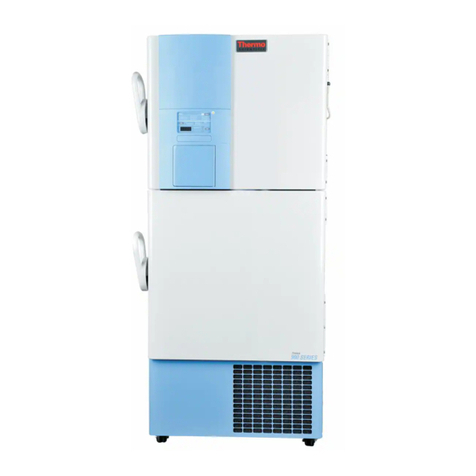
Thermo Forma
Thermo Forma 900 Series Operating instructions

Thermo Forma
Thermo Forma Power Plus 8500 Series Operating instructions

Thermo Forma
Thermo Forma 8097 Operating instructions

Thermo Forma
Thermo Forma 8523 Operating instructions
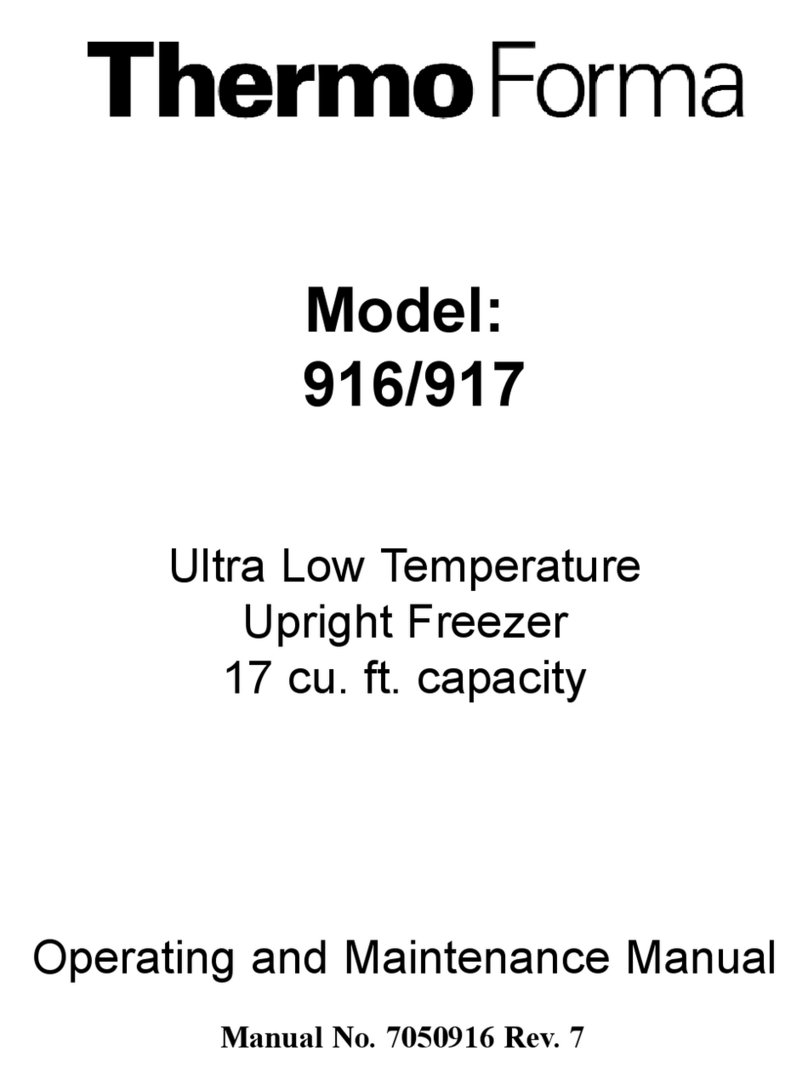
Thermo Forma
Thermo Forma 916 Operating instructions
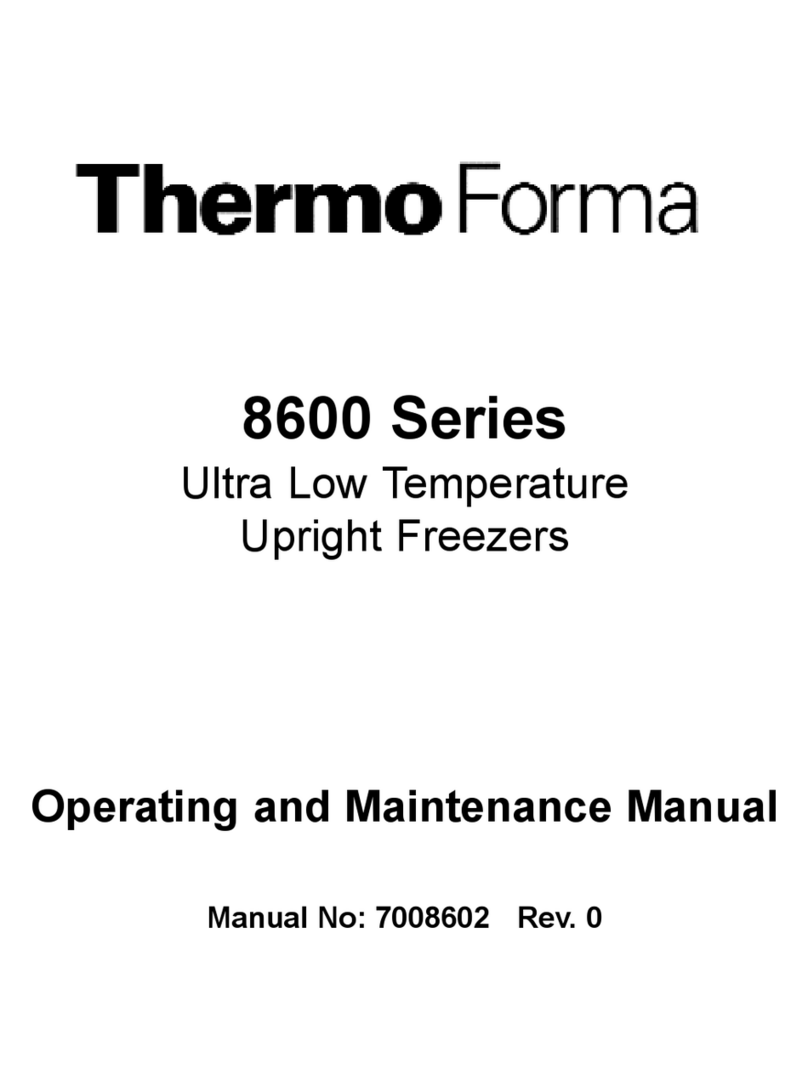
Thermo Forma
Thermo Forma 8600 Series Operating instructions


